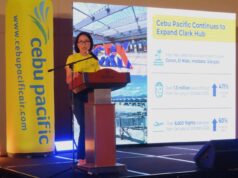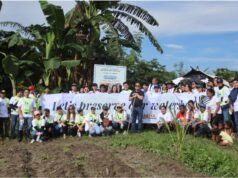(National Anti-Poverty Commission Secretary/Lead Convenor Noel K. Felongco (middle) and representatives from the 14 basic sectors present to the media the mandate and accomplishments made by the commission in addressing the concerns of the poor. – PIA 3)
CLARK FREEPORT — About 150 leaders representing the 7 provinces of Central Luzon and 14 basic sectors are currently gathered in Clark for a Regional Sectoral Assembly (RSA).
“RSAs aim to broaden the space for basic sector participation and ensure a more equitable regional representation; validate the list of organizations present in the regions and map-out possible delegates to the National Sectoral Assemblies; develop a region-specific sectoral and cross-sectoral reform agenda and action plan; and organize interim government-basic sectors regional coordination mechanisms,” National Anti-Poverty Commission (NAPC) Secretary/Lead Convenor Noel K. Felongco said.
The 14 basic sectors are farmers and landless rural workers, artisanal fisherfolk, urban poor, indigenous peoples and cultural communities, workers in formal labor and migrant workers, workers in the informal sector, women, children, youth and students, senior citizens, persons with disabilities, victims of disasters and calamities, non-governmental organizations and cooperatives.
“NAPC is the only government agency in the country that has a structure where the 14 basic sectors of the society are fully-engaged and institutionalized as fundamental components of the agency as well as a government sector comprised of 25 national government agencies and presidents of four leagues of local governments,” Felongco added.
“With the President as the Chairperson, the Commission embodies the principle of basic sector participation in policy-making at the highest level of governance. This unique structure enables us to monitor the government’s anti-poverty alleviation programs and communicate the agendas of each sector to the national government as mandated in Republic Act 8425,” the official furthered.
Earlier this year, the Philippine Statistics Authority reported that the poverty incidence among the population in Central Luzon dropped from 14.7 percent in the first half of 2015 to 10.3 percent in the same period of 2018. Moreover, poverty incidence among families fell from 12.2% in the first half of 2015 to 7.8% in the same period of 2018.
According to the National Economic and Development Authority, this general decline can be attributed to the growth in employment in the manufacturing and construction sectors as well as employment shifts to the industry and service sectors from agriculture.
“Even though we have made significant strides in reducing poverty in the region, the road to winning the battle against poverty is still long. If we translate our country’s overall poverty incidence at 21%, this means that there are 23.1 million Filipinos who do not have income that meet the poverty threshold or the minimum amount needed to meet the basic food and non-food requirements of a family of five,” Felongco stressed.
He vowed that despite the many challenges, NAPC will continue to strive towards a society where the presence of government is felt within each community. It shall double its efforts in providing the support needed by all sectors in the country.
For his part, NAPC Vice Chairperson for the Basic Sectors Ruperto B. Aleroza disclosed that among the key executive and legislative measures they succeeded include Republic Act 11350 which created the National Commission of Senior Citizens and Republic Act 11291 or the Magna Carta of the Poor. Also, Executive Order No.92 series of 2019 which institutionalized the National Council Against Child Labor. -PIA 3





